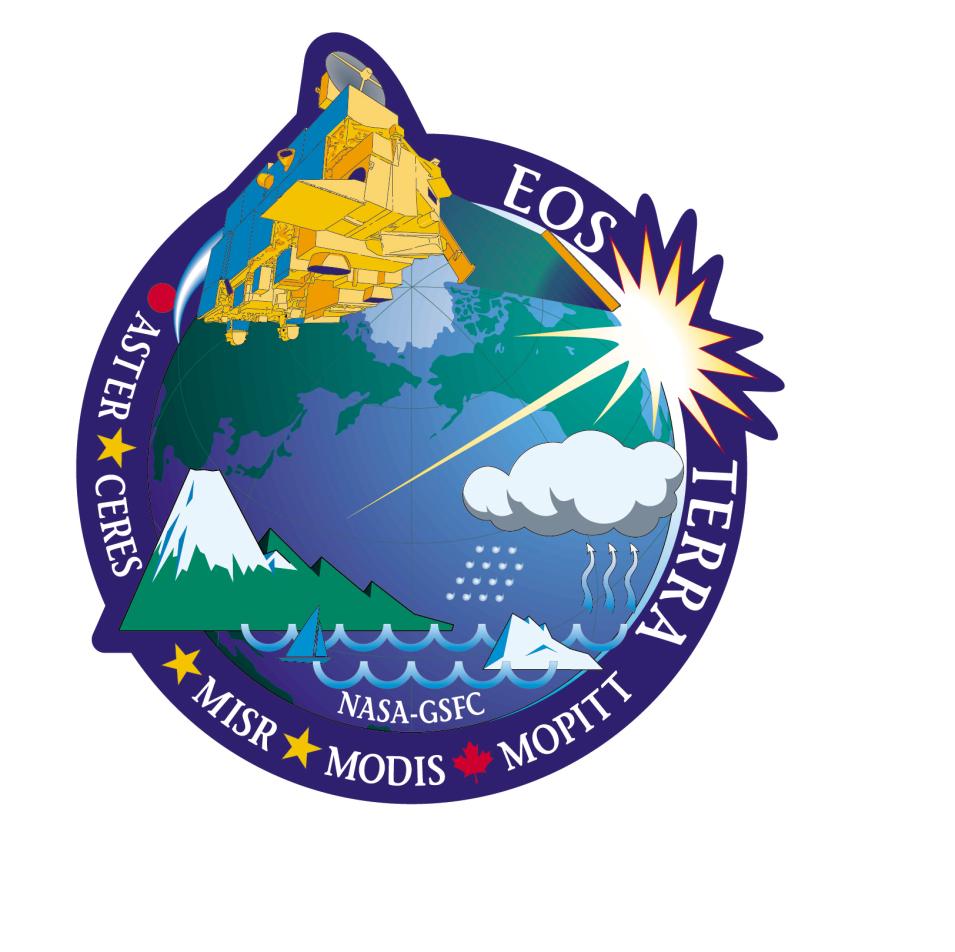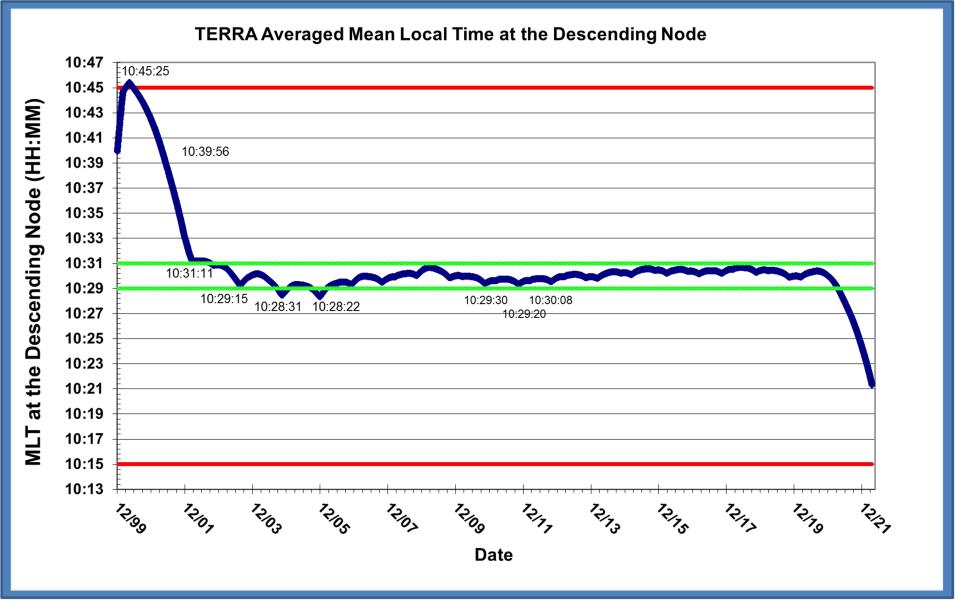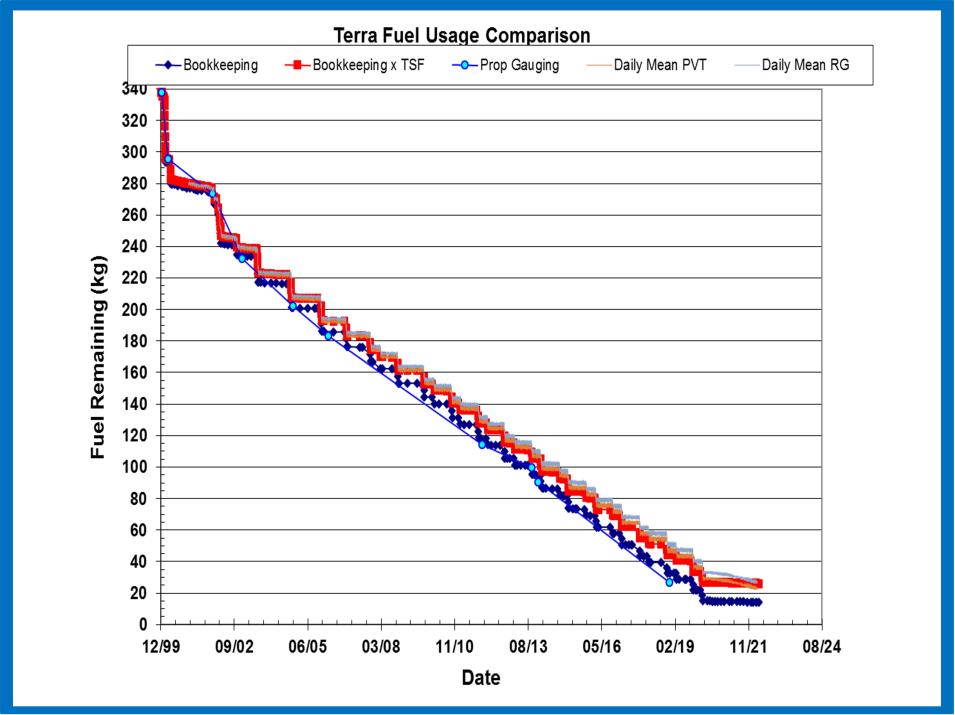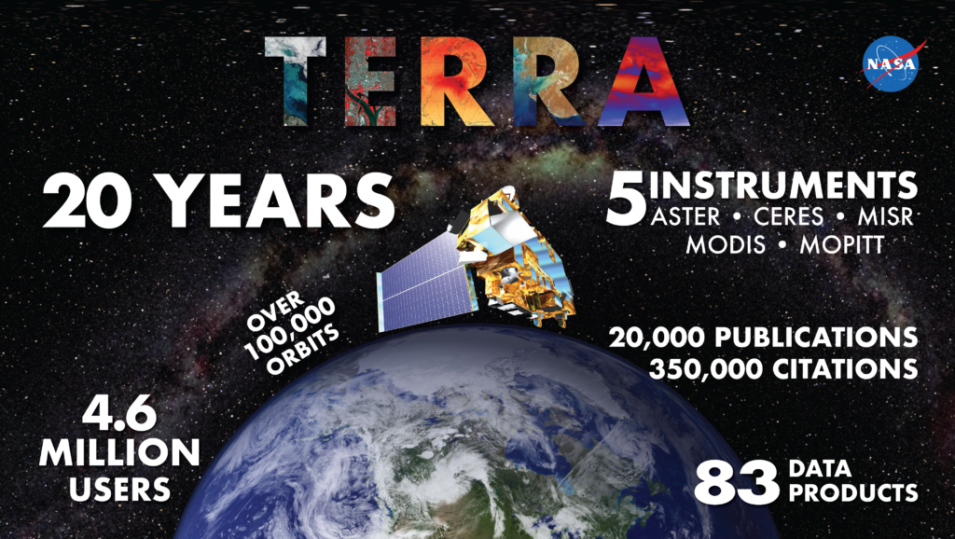Fuel is used for three primary types of maneuvers: inclination adjustment maneuvers to control the platform’s equator crossing MLT; drag makeup maneuvers (DMUs) to control orbital altitude, which is how high above Earth (apogee) and how close to Earth (perigee) the spacecraft goes; and risk mitigation maneuvers (RMM)/debris avoidance maneuvers (DAMs) that are used to protect the platform from collisions with known on-orbit debris or other spacecraft, which are constantly tracked by the U.S.-led multinational Combined Space Operations Center and updated three times a day.
Mantziaras notes that Terra will be allowed to continue to drift in orbit until its equator crossing time slips to 10:15 am, MLT, which is expected to occur in the fall of 2022. At this point Terra will exit the science constellation. “Once we’ve reached our mission and MLT requirement we plan to lower our orbit so we can get out of the way of the other 705 km missions [like Aqua and Aura],” he says. “We’re going to do two large burns similar to the inclination burns we did throughout the mission to get us five or six kilometers below the 705 km altitude. From there, we’re just going to drift our orbit.”
At this lower orbit, Terra will be less of a threat to any other satellites and will still have fuel reserves to execute RMM and DAM as needed. The instruments will remain on as atmospheric drag begins to pull Terra back to Earth over the next several years. Fuel remaining at this mission milestone: approximately 12 kg.
The return home
Someday over the next several years, probably after Terra exits the science constellation, NASA Headquarters will send a letter to the Terra mission operations and science teams that it’s time to initiate Phase F and terminate the mission. Like all NASA missions, Terra has a formal plan for Phase F that is constantly updated to ensure proper steps are followed. Thome notes that the full Phase F process will take two or three years. “At the end of that process everything is done, instruments are off, data have been archived, and it has been assured that people can still get access to these data,” he says.
Thome and the science teams will take care of passivating the five instruments. Once the instruments are powered down, Mantziaras and the operations team will take over to shut down the platform. “We’ll use the remaining fuel to lower our perigee and then we have a series of procedures and commands that we run to turn out the lights on Terra,” Mantziaras says. “We want to make sure we get all the fuel out. We deplete the batteries and put everything in a safe mode before we turn out the lights.”
And then, as Thome points out, things get pretty simple. “It’s fairly large and it’s fairly well-behaved, so folks who are tracking Terra will know what it is and who owned it originally; they do not have to worry about someone all of a sudden flipping a switch and doing a maneuver,” he says. “And this is where the communication comes in. By communicating with all of the other international organizations and maintaining that communication, everybody can avoid [Terra].”
But the platform still has to return to Earth. Again, this will be a simple process. After Mantziaras and his team lower the platform’s perigee as much as possible, atmospheric drag will take over to lower the spacecraft to a point where it will burn up in the atmosphere. Don’t worry about scheduling watch parties anytime soon—Terra’s final, fiery reentry is not expected to occur until more than 40 years after the platform is switched off.
Thome and Mantziaras both note that reentry risk mitigation is a major component of the Terra End of Mission Plan and any threat from the satellite’s reentry is minimal. Not only is Terra constructed of materials designed to burn up in the atmosphere, its polar orbit takes it over some of the most sparsely populated areas of the planet. “If a [shoebox-sized] CubeSat maintained its size coming in it would do much more damage than Terra could ever do in its current configuration,” Thome points out.
Data never die
Data preservation is a critical aspect of Phase F. Even after the end of the mission, all Terra data will continue to be archived, enhanced, maintained, and available without restriction through NASA’s EOSDIS. “Terra has great quality data,” says Thome. “While there might be some newer instruments, they can’t collect data in 1999.”
Thome further observes that the science team has constantly worked to enable Terra instrument data to be used with data collected by next generation instruments. Terra data will continue to remain relevant as a climate data record as NASA launches its upcoming Earth System Observatory series of missions. The NASA and competitively awarded commercial missions comprising the Earth System Observatory will build upon the EOS climate data record and provide key information to guide efforts related to studying climate change, mitigating disasters, fighting forest fires, and improving real-time agricultural processes.
“The legacy of Terra and Aqua and Aura is that we set the standard for doing a big mission with multiple instruments and doing it successfully,” says Thome. “Once we understand the data from the Earth System Observatory missions, then data from Terra and Aqua and Aura and all the data from the early 2000s will be critical to help fill in those time gaps.”
An epic legacy



